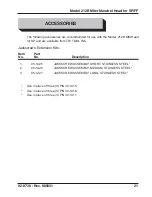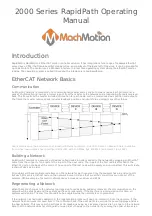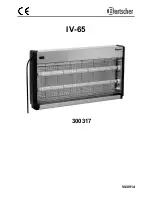
16
TRI TOOL INC.
92-0738 : Rev. 980331
This will diminish the amount of Parallel Offset required after the angular
adjustment has been made.
Using a tape measure or a steel ruler, keep the rear flange of the Gimbal Plate
roughly centered while turning the Jackscrews to tighten them against the ID of the
work-piece.
Use the wrenches provided to tighten all eight (8) Jackscrews securely.
Mount the Indicator Sleeve to the Adapter Plate Assembly and tighten the Mounting
Nut.
Place the magnetic based indicator holder onto the Sleeve and energize the
magnet.
If the existing surfaces of the work-piece are to be used for alignment and
centering references, use the Dial Indicator and the hardware provided.
If punch marks, scribe lines or other references are to be used, simply select
the required hardware from the Indicator Kit to be used as a pointer.
The first adjustment to be made after mounting is always the Angular Offset.
NOTE: Changing the Angular Offset will always change the Parallel Offset,
but changing the Parallel Offset will not change the Angular Offset.
To move the Adapter Plate Assembly in a given direction, one (1) or two (2) Angular
Offset Adjustment screws opposite the direction of the movement must be loosened
enough to allow the amount of movement.
Then the Screws directly across must be retighten to draw the Adapter Plate
Assembly in the desired direction.
NOTE: Never exceed 40 ft/lbs (54 N/m) of torque on the Angular offset
Adjusting Screws.
Repeat the indicating procedure and Angular Offset procedure as many times as
necessary to achieve the accuracy desired.
NOTE: evenly tighten all four (4) Angular Offset Adjustment Screws.
Now the parallel Offset Adjustment may be made.













































